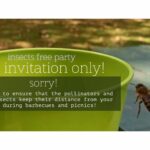Hello Honeymonsters!
We hope you are continuing to enjoy these long summer days! It is the perfect time to get out and enjoy some nature and do some bee spotting!
We would like to bring your attention to an awareness campaign taking place this month.
This month is Plastic Free July!

We are a plastic-free business, with all our packaging being completely recyclable, and using recycled materials where possible. We also have a refill system in place, we encourage our customers to return honey jars back to our shop so we can use them again, and again, and again!
In addition, some of our packagings is specially designed to benefit the environment (especially the bees!). Our soap range is packaged with lavender seed-embedded paper so that you can plant the paper (which will decompose) and grow your own lavender patch! Lavender is a very good source of food for all pollinators, and it looks and smells divine!
Of all the problems plastics cause to our ecosystems, one of the more recent discoveries is the presence of microplastics and their effect on the flora and fauna that make up these ecosystems. Being able to track these microplastics and their dispersal is crucial to establishing the effect they may have on these ecosystems. One unlikely helper in this research is our dear friend, the Honeybee.
A recent study published in Science of The Total Environment looked at the Honeybee’s natural ability to collect particle substances during their foraging (an ability that helps the bees to effectively collect pollen). They found that this allowed the bees to passively sample the surrounding area, by inadvertently collecting micro-plastics. This study sampled bees from both inner city and rural environments.
Although the levels of microplastics were higher in the urban areas, the rural levels were not much lower. This research gives light on how microplastics spread, suggesting that they may be spread by the wind, allowing us to carry out more precise research. In addition to highlighting the different varieties of synthetic polymers, and which were most prevalent in which areas.

The study also highlighted the effects the micro-plastics had on the bee’s health. Although it appears they are often not directly toxic or inhibiting to the bees themselves. They found that the inclusion of these polymers in their hive put the bees at risk of creating very toxic compounds when mixed with other synthetic chemicals brought into the hive. Such as pesticides.
Our bee sisters are incredibly clever and useful to us in many ways, however, this cutting-edge scientific research goes to show just how much the natural world can give us when we look to it for help.
Of course, the best way to ensure that we protect our ecosystems from micro-plastics is to reduce the amount of plastic being used in the first place. When you buy anything from us, you can bee sure that there is no plastic waste created during the process.
And remember to check out our soaps with lavender seeded packaging, so you can give something back to the bees that helped make it!

Bibliography:
Honeybees are accumulating airborne microplastics on their bodies
Scientists discover a new way to monitor airborne plastic particles. But do they harm bees? by
Other Sources:
Beeco is a marketplace (currently focused on the UK market) and a media platform showing there is a sustainable alternative for most everyday products and services. Check it out!





